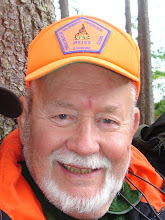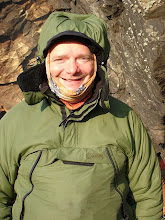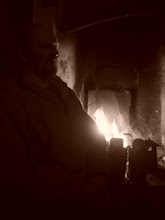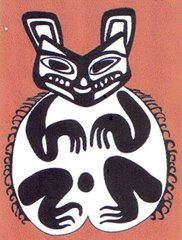KHUKURI \ KUKRI KNIFE: A mid-length curved knife comprising a distinctive “Cho” that is the national knife and icon of Nepal, basic and traditional utility knife of Nepalese, a formidable and effective weapon of the Gurkhas and an exquisite piece of local craftsmanship that symbolizes pride and valor which also represents the country and it’s culture. Believed to have existed 2500 years ago; “Kopi” is the probable source of the Khukuri that was used by Greek in the 4 th BC. However, khukuri came into limelight only in and particularly after the Nepal War in 1814-15 after the formation of British Gurkha Army. Basically carried in a leather case, mostly having walnut wooden grip and traditionally having two small knives, it is one of the most famous and feared knives of the world.
Kukri Blade
1.
Belly (Bhundi): Widest part/area of the blade.
2.
Bevel (Patti): Slope from the main body until the sharp edge.
3.
Bolster (Kanjo): Thick metal/brass round shaped plate between blade and handle made to support and reinforce the fixture.
4.
Butt Cap (Chapri): Thick metal/brass plate used to secure the handle to the tang.
5.
Cho/Notch (Kaudi): A distintive cut (numeric 3 like shape) in the edge functioned as a blood dropper and others.
6.
Edge (Dhaar): Sharp edge of the blade.
7.
Fuller (Chirra): Curvature/Hump in the blade made to absorb impact and to reduce unnecessary weight.
8.
Fuller/Groove (Khol): Straight groove or deep line that runs along part of the upper spine.
9.
Keeper (Hira Jornu): Spade/Diamond shaped metal/brass plate used to seal the butt cap.
10.
Main body (Ang): Main surface or panel of the blade.
11.
Peak (Juro): Highest point of the blade.
12.
Ricasso (Ghari): Blunt area between notch and bolster.
13.
Rings (Harhari): Round circles in the handle.
14.
Rivet (Khil): Steel or metal bolt to fasten or secure tang to the handle.
15.
Spine (Beet): Thickest blunt edge of the blade.
16.
Tang (Paro): Rear piece of the blade that goes through the handle
17.
Tang Tail (Puchchar): Last point of the khukuri blade.
18.
Tip (Toppa): Starting point of the blade.
Kukri Scabbard
1.
Chape (Khothi): Pointed mettalic tip of the scabbard. Used to protect the naked tip of a scabbard.
2.
Frog (Faras): Belt holder especially made of thick leather (2mm to 4mm) encircling the scabbard close towards the throat.
3.
Lace (Tuna): A leather cord used to sew or attach two ends of the frog. Especially used in army types (not available in this pic).
4.
Loop (Golie): Round leather room/space where a belt goes through attached/fixed to the keeper with steel rivets.
5.
Lower Edge (Tallo Bhag): Belly/curvature of the scabbard.
6.
Main Body (Sharir): The main body or surface of the scabbard. Generally made in semi oval shape.
7.
Strap/Ridge (Bhunti): Thick raw leather encirlcing the scabbard made to create a hump to secure the frog from moving or wobbling (not available in this pic).
8.
Throat (Mauri): Entrance towards the interior of the scabbard for the blade.
9.
Upper Edge (Mathillo Bhaag): Spine of the scabbard where holding should be done when handling a Khukuri
Cutting tool Used for domestic purposes, for kitchen use, for gardening, backyard clearance, household work, in and around living area; a basic cutting tool.
Outdoor For jungle use as a machete, during safaris, trekking, camping out in the woods, hunting, fishing, cutting and clearing bushes, branches /small trees, forestry activities, also used as hammer, digger etc, basically a survival tool.
Military For parade (Kukri drill), on duty or guard, training, exercises, warfare, combat, close counter fighting, army ritual ceremony, presentation (when an officer retires, he is given a special “Kothimora” sliver Kukri to mark his loyal service and duty), regimental insignia and distinction.
Religious and Cultural For beheading domestic animals during festivals (mainly Dashain), to perform ritual ceremonies (which requires slaughtering for example; vehicles opening), during marriage ceremonies (bridegroom with his traditional marriage dress), royal ceremonies (in the absence of the king, his kukri will represent him), special ritual occasions (particularly which requires blood and blessings), Poojas. Also in castes like Rai, Magar Gurung’s tradition, a kukri is buried along with the dead with a belief that by doing so it would destroy all his demons and sins. In remote villages there is a practice of presenting kukri to a grown lad to mark his manhood and maturity.
Presentation, Display and Collection As gifts (to honor or thank someone in a special way), for decoration (to decor or adorn ones place, a special way to enhance the beauty and ambient), Collector’s pride and preference, unique souvenir and memento, prizes and cup, owner’s prize possession, business promotion and awards.
Myths and Beliefs The famous legendary story goes- every time a Gurkha draws his weapon out, if he was unable to find his enemy’s blood then he had to put his own, other story also goes- long time ago it was believed that Kukri was also used as boomerang; means; it was thrown towards the enemy, beheaded him and swung back to the user’s hand; kept under pillow to prevent bad dreams and nightmares, in villages and rural areas carrying kukri symbolizes manhood for boys, to keep away satins, ghosts and black magic, to safe guard and protect a family spiritually and religiously. As well, a very popular saying in Nepalese as “Kukri Bhanda Karda Lagne”, sarcastic meaning “To be over smart than his/hers elders”
Pride and Honor National icon, national weapon, national souvernity, symbols/monograms for many Nepalese Government departments and branches (army, police, security, forestry, scouts etc), representing Nepal internationally and worldwide, naming local products after “Kukri” (Khukuri Rum, Khukuri Choorot/cigarette etc), unique national memento and souvenir, honest and powerful recognition, trademark for security forces at war and peace, a precious gift used at the highest official level
Ornaments and wealth Precious and valuable ornaments (to adorn oneself with special curio type replica kukris), to show one’s status and size (gold and silver Kukris at home, office etc), history shows kings, ministers, generals etc displaying big expensive kukris to demonstrate power, money and pride.

But above all this a Kukri is a excellent full sized camp knife Ideal for all the tasks we'd ask of an Hatchet or small forest axe. And with the two smaller knives a far more complete outfit. THe smallers knives (usually 3" in length) are the Karda which is a utility blade ideal for whittling, food or game prep and all tasks the bigger blade is deemed to cumbersome for. The OTHER tool is a chakmak this is a sharpening device not really a stone more like a file ................but it is also the tool used with flint for fire light as in your standard flint and steel.
And as a parting thought - if you have to have a Kukri wielding buddy - fingers cross you have one like this ...............

































